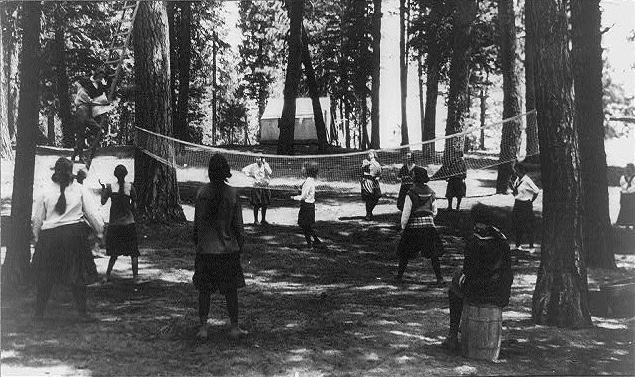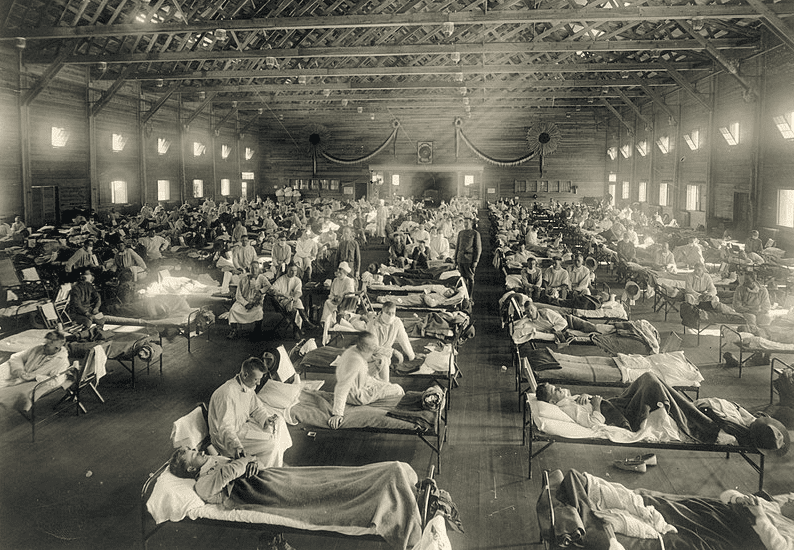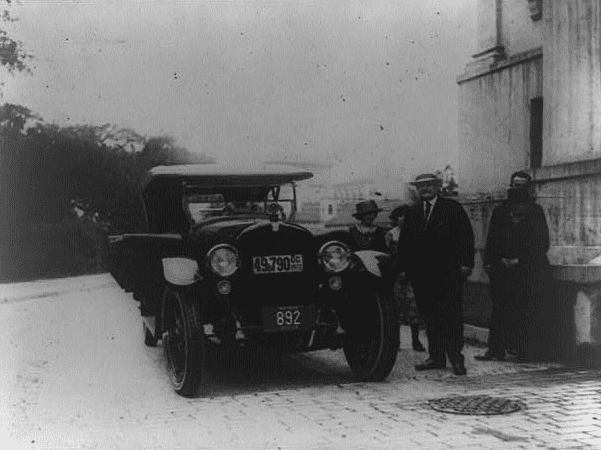With today’s technology, it’s never been easier to access information – about both the past and the present. As more information from the past becomes accessible online, and people around the world become increasingly interconnected, we can’t help but wonder exactly who we are, where we came from, and what life was like for our ancestors.
Learning about the family members that led to you today is an incredible and fascinating experience. If you’ve thought to yourself, “What was life like 100 years ago?” you’re about to find out some of the answers – keep reading to learn about notable events and technological innovations of the 1920s.

Notable Events 100 Years Ago
When we think of the past, we don’t always think of it in the context of the present. Whether or not they’re relatable today, the historic events of 100 years ago shaped society as we know it, and one parallel in particular may surprise you.
The World Was Dealing with a Pandemic
The world was still suffering from the 1918 influenza pandemic (H1N1 virus) 100 years ago today – a deadly, severe pandemic that killed an estimated 50 million people.

Similar to COVID-19, H1N1 was not well understood at the time. With no vaccine to protect from infection, the guidelines from the Centers for Disease Control and Prevention (CDC) looked nearly identical in 1918 as they do today. Control efforts were non-pharmaceutical, such as:
- Isolation
- Quarantine
- Personal hygiene
- Use of disinfectants
- Limits on public gatherings
Schools and businesses were shut down and people were forced to wear masks, as the influenza was also a respiratory illness spread by droplets in the air. Sometimes called the Spanish flu, this pandemic was also believed to originate from animals, and unknowingly made the jump to humans, infecting people worldwide.
Coming in waves, it lasted from February 1918 to April 1920, infecting roughly 500 million people, only ending once people began to develop immunity.
Prohibition Outlawed Alcohol
The United States Constitution was amended twice in 1920, the first being the 18th Amendment. In January of 1920, the 18th Amendment went into effect, outlawing the manufacturing, sale, and transportation of alcohol.
Known as Prohibition, the final decision to outlaw alcohol had gained impetus during World War I. Advocates argued that the grains used in making alcohol could be used to feed American soldiers, and since Germany was perceived as an enemy at the time, the German brewing industry was seen as a threat.
As the 1920s continued, Americans began spending more money than ever on alcohol – from the black market. When the Great Depression began, it became clear that the tax revenue from alcohol sales would help the economy, and Prohibition was repealed.
Women Gained the Right to Vote
The women’s suffrage movement struggled throughout the 19th century, but it wasn’t until the 19th Amendment was passed by Congress in 1919 – and ratified in the summer 1920 – that women were finally given the opportunity to vote in the United States.
In February of 1920, an organization called the League of Women Voters (LWV) was founded in Chicago, Illinois, by Carrie Chapman Catt. Its purpose was to encourage women to mobilize and exercise their newfound right to vote that Congress had passed – 100 years later, the LWV still exists today.
Technological Innovations and Medical Advancements
Between the technological innovations that led to new methods of production, and life-changing advancements in medicine, life 100 years ago today greatly impacted the way ideas and people travel, and our overall safety.
Radio Broadcasting Was Born
Despite the fact radios had been around for many years, commercial radio stations didn’t start until 1920. The first commercial radio station in the United States was Pittsburgh’s KDKA, and because of its popularity, within a few years there were over 500 commercial radio stations across the country.
The Automotive Industry Took Off
The birth of the automobile industry created many manufacturing jobs, which led to the introduction of assembly-line production. This allowed large automotive companies to hire cheaper laborers with less technological skill, such as women, as part of their workforce.
As production increased, innovative new machinery began to develop.
One important invention was the bulldozer, which was originally made to dig canals. The retractable hardtop convertible system was also made, and while the car’s hardtop had to be moved manually, it was the first of its kind and met with enthusiasm. Even more notably, with so many cars on the road (thanks to the booming auto industry), came the invention of the traffic light.
Major Medical Advancements Were Made
Two significant medical breakthroughs were discovered 100 years ago and are still relied on today: insulin and penicillin.
One of the most important inventions of the 1920s was an accidental discovery by Scottish scientist Alexander Fleming. While studying bacteria in the hopes of finding antiseptics that could be used during World War I, he discovered the life-saving antibiotic, penicillin.
Canadian physician Federick Banting, with the help of physiologists and biochemists at the University of Toronto, created the first effective treatment for diabetes – a monumental discovery considering children with diabetes rarely lived for more than a few years. The Connaught Laboratories in Canada and the Eli Lilly Company in the United States were given manufacturing rights to the drug, and soon were producing enough insulin to meet the needs of diabetics worldwide, according to The Pharmaceutical Century.
Getting to Know Your Family 100 Years Ago
Now that you know more about what life was like 100 years ago, it’s time to figure where your family fits into the picture. When researching your family from this era, census records and newspaper archives are a great place to start. Using a service like GenealogyBank, you can trace your family’s history and learn about the lives of your ancestors. With billions of genealogy records, the past is just a click away.
Explore over 330 years of newspapers and historical records in GenealogyBank. Discover your family story! Start a 7-Day Free Trial
Sources:
- Centers for Disease Control and Prevention
- HISTORY: Spanish Flu
Related Articles:
